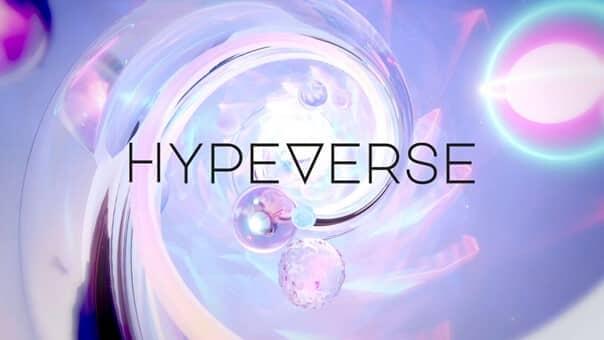What is HyperVerse, and how does it work?

What is HyperVerse, and how does it work?
Have you ever heard about the HyperVerse before, and do you know exactly what it is and how it works? Does it seem like the whole crypto community has been talking about the HyperVerse lately and writing about it across popular crypto forums and social media platforms?
First, HyperVerse represents an open marketplace that includes easy-to-discover, community-built, and audited smart modules. The goal behind the HyperVerse crypto project is to ease JavaScript developers to build enchanting Web3 apps without any need to write a single line of smart contracts code.
So, what is the role of a Decentology company in all this? What are they building actually and providing crypto enthusiasts with their HyperVerse project?
HyperVerse – the marketplace for composable smart contracts
When it comes to Decentology, it is building the HyperVerse, to be one of the best decentralized, open, blockchain-agnostic marketplaces for composable smart contracts. Launching the HyperVerse will be in beta by year-end. It will all start with the following blockchains:
- Ethereum
- Algorand
- Flow
Besides all that, the creative team is also developing innovative solutions for the following things that function cross-chain on the HyperVerse:
- Discoverability
- Security
- Smart contract development
- Monetization
It all results in the most comprehensive and quality marketplace for smart contracts ever created so far.
The transition of the company to a community-driven DAO
Decentology is transitioning the company to a community-driven Decentralized Autonomous Organization, or DAO, that will be responsible for managing the future ecosystem development and growth of the HyperVerse. At the same time, the company will provide onboard the additional 10 million Web2 developers to Web3.
To accomplish its goals and vision, the company has raised $4.3 million in seed funding from the best crypto investigators in the world. The plan is to enable a token sale in the days to come.
But, besides funding, community-driven DAO, ecosystem growth, and Smart Contract Composability, we’d like to focus on the HyperVerse marketplace and give you all the essential information you need to know.
The main four capabilities of the HyperVerse

As mentioned above, HyperVerse is an open, decentralized, blockchain-agnostic marketplace created exclusively for composable smart contracts. It’s a specific solution that’s designed for decentralized composability at scale.
Here are the main four capabilities of the HyperVerse crypto marketplace project:
- Security
- Development
- Monetization
- Discoverability
Let’s start with development, shall we?
Development of the HyperVerse marketplace

For the HyperVerse marketplace to be beneficial, it is crucial to include smart contracts composed of developers actively building decentralized apps. However, it also includes developers who will create these composable smart contracts. These developers are called “the HyperVerse developers, “creating entities named “Smart Modules.”
In short, Smart Modules implement primitives of the blockchain app. A single smart module refers to a package with a minimum of a smart contract, unit tests, metadata, and all the necessary documentation. In some situations, it can include a sample code and a user interface responsible for testing harnesses.
Typically, the smart contract implements a Blockchain primitive, a feature that enables discrete functionality. Here is one good example: a Subscription Smart Module can allow an application to check if the calling account is an active subscriber for a specific feature.
Multi-tenant Smart Modules
It’s important to note that Smart Modules are multi-tenant, which is also their crucial characteristic. Typically, this models SaaS apps in Web2 that represent single applications that serve numerous diverse users.
Smart Modules enable it by separating smart contract logic that resides in the HyperVerse-deployed smart contract, on-chain, from the associated data. It’s a specific and authentic HyperVerse Smart Modules feature that’s designed to address different scenarios where it’s essential for calling apps to utilize composable smart contract rules. Still, they also store data in their personal account space.
Security

Developers need to trust developers who built the Smart Module and have great confidence in its code for them to use Smart Module in their applications. In Web2, some big organizations such as Google and Apple utilize a combination of manual and automated analysis and audits to ensure that the code developers submitted are trustworthy, defect-free, and of the highest quality.
When it comes to Web3 code, audits performed on smart contracts by security experts are the closest equivalent to all this. This specific audit model is broken, and HyperVerse is here to fix it with an innovative audit model and review.
Insurance layer for smart contracts
What’s first submitted to the HyperVerse is Smart Module. Multiple Registrars review the module package for completeness. This is to ensure that the Module doesn’t have any malware. Before deployment on-chain, multiple auditors audit the code of the Smart Module.
If they trust the code 100%, they may signal this by staking tokens. The auditor is eligible for pro-rata of future revenue from the SMart Module enabled by the staked tokens. Keep in mind that these aggregate staked tokens on a Smart Module can also act as an insurance layer.
Predefined rules are the base for slashed tokens if a vulnerability or a defect in the Smart Module code causes a loss of money or data.
Discoverability
The biggest challenge for these developers is knowing what contracts are available, how to interact with the contract, their on-chain address, who created the contracts, and whether they are 100% to be trusted.
HyperVerse solves the discoverability problem with metadata. Every Smart Module includes on-chain and off-chain metadata. The usage is tracked thanks to the HyperVerse Registry contract. Coupled with the usage data, metadata adds analytics capabilities and discoverability for Smart Modules.
Keep in mind that HyperVerse will also provide users with a web-based, default, and discovery experience.
Monetization
Contributors have a decentralized path to monetization, thanks to HyperVerse. Smart Modules, optionally, enable transaction-level fees which are captured on-chain. They flow into the DAO Treasury from on-chain and are distributed to auditors, registrars, developers, and the DAO based on predefined rules.
Non-fungible tokens, NFTs, unlock the futures market for software. It’s crucial to understand that every Smart Module on the HyperVerse is viewed as an asset represented by a Non-Fungible Token. Smart Module contributors are issued NFTs representing their share of future revues fractional ownership of that particular Smart Module. It is a significant unlock for open-source software.
So, suppose you, as a user, determine to stake on or contribute to a fee-based HyperVerse Smart Module in any capacity. In that case, you are able to sell or collateralize the future income that an NFT represents.
But have you heard about the Hyperverse virtual metaverse? Let’s find out what it refers to exactly.
What is the HyperVerse virtual metaverse?
 The HyperVerse is also a virtual metaverse that contains millions of different planets. In this virtual metaverse, players are also called the “voyagers” and can connect with their fellow players, friends, and acquaintances, experiencing different lifestyles and cultures. They can also create tokenized items, explore the universe, or even start their own business.
The HyperVerse is also a virtual metaverse that contains millions of different planets. In this virtual metaverse, players are also called the “voyagers” and can connect with their fellow players, friends, and acquaintances, experiencing different lifestyles and cultures. They can also create tokenized items, explore the universe, or even start their own business.
HyperVerse provides a legitimate chance for each galaxy resident, thanks to VerseDAO.
Features of the HyperVerse metaverse
Here are some of HyperVerse’s most iconic features presented on the HyperVerse net site:
- Virtual Experience: Players can clone themselves and experience all the potential of living in the famous HyperVerse.
- Tokenized Items: Anything within the HyperVerse can be traded as NFT tokens.
- Galaxy Pioneer: Players can also be galaxy wanderers or start their interstellar enterprise within the metaverse.
- Space Expedition: To explore unknown planets and spaces, players can form groups in HyperVerse for interstellar explorations and expeditions.
- Decentralized Capital: Real-world tokenized contracts, stocks, options, and ETFs can also be traded within this metaverse.
- V-DAO: By initiating and voting for new proposals, players are able to govern this decentralized virtual world.
VerseEco – explained
VerseEco is the HyperVerse ecosystem to help all players, a.c.a voyagers, bring virtual assets to the real world and support the regulation and governance of trading activities within this HyperVerse.
It consists of the three components such as:
- VerseDao
- Nebula
- The Galaxy Decentralized Capital.
These components transform the HyperVerse into an autonomous capitalistic world.
V-DAO – explained
As you probably know, DAO is the “Decentralized Autonomous Organization.” In this case, V-DAO owns all the smart contracts for all the assets in the HyperVerse World, allowing for autonomous community governance and subsidizing operations throughout the HyperVerse. Players are also able to participate in governance measures by initiating new proposals and voting.
The Community of HyperVerse
The HyperVerse community is truly committed to their HyperVerse virtual world. The creators of HyperVerse wanted to create an autonomous platform that would allow players, a.k.a voyagers, to play, socialize and trade. It will be governed entirely by its devoted users as a decentralized ecosystem.
Along with creators’ business partners, the goal is to enable an immersive metaverse for their users, who will have a high-quality experience. The official website is the h5.thehyperverse.net.
The whole community has gone crazy about the story where humans mastered interstellar travel in 2078 AD in this metaverse. The very first group of voyagers on the Proxima Centauri star system made the HyperVerse. It was the beginning of the age of interstellar migration.
Thanks to this captivating story, there is no wonder a huge interest in this completely authentic HyperVerse virtual world.
The post What is HyperVerse, and how does it work? appeared first on FinanceBrokerage.
0 Response to "What is HyperVerse, and how does it work?"
Post a Comment